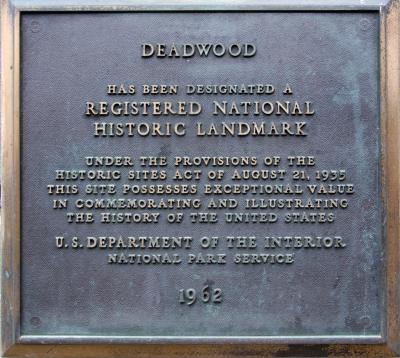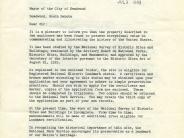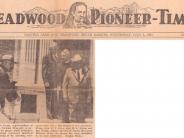A National Historic Landmark
With each footstep on its brick-paved streets, across the tombstones of Western legends long dead and through its thick forests of dark ponderosa, Deadwood Gulch echoes with sounds of days past - the sounds of history.
Designated a National Historic Landmark in 1961, the entire community of Deadwood is alive and vibrant with historic character over 125 years in the making. Since its founding in 1876, Deadwood has been synonymous with the Wild West. From its early days as a lawless gold camp to its transformation into a model Victorian community and a modern center for commerce and entertainment, the town has always had a legendary reputation unparalleled in the American West.Deadwood's birth was sudden. Thousands of faceless miners, muleskinners, lawmen, gunslingers and gamblers descended upon this narrow and rocky canyon in the Black Hills of Dakota Territory in 1876. They prospected, opened shops, built houses, drank, bet it all, lost fortunes and gained riches beyond their wildest dreams. It was America's last great gold rush.Legends were made almost overnight with a lucky shovelful of earth or turn of a card, but they were just as easily lost with a well-placed bullet. Wild Bill Hickok, frontier gunfighter, came to Deadwood with the other '76ers to seek his fortune. Thanks to a pistol shot to the back of his head, he never left. He sleeps on a hill overlooking the gulch to this day, next to the graves of Calamity Jane, Seth Bullock, Potato Creek Johnny, Preacher Smith and hundreds of Deadwood's other legendary denizens.
But as the legends passed on, so did the gold. The ancient mansions, grand stone balconies and elegant brick façades began to decay. Deadwood seemed destined to turn into a ghost town, fading slowly into history like so many of its famous residents had done long ago...But it was not to be. In 1989, Deadwood became the third place in the United States (after Atlantic City and Nevada) to legalize gambling. Once again the brick-paved streets of Deadwood heard the thunder of pistol shots, the songs of slot machines and the click of chips against card tables. Once again people rushed to the sweet ponderosa-touched alpine air of Deadwood Gulch to seek their fortunes. And once again the beautiful Victorian buildings of Main Street, restored to their former glory, were filled with an air of elegance and grace.
Growth and change since 1989 has been regulated and limited by Deadwood's Historic Preservation Commission, Planning Commission and City Commission. The town continues to too plan for each future while protecting its past. This is evident in the Comprehensive Plans and Master Plans it has developed over the years. For its part, the Historic Preservation Commission adopted standardized Design Guidelines for the Downtown Commercial District, the Secretary of the Interior's Standards for Historic Rehabilitation and a comprehensive sign ordinance.
Below is nomination forms, surveys and documentation regarding the National Historic Landmark District and the National Register District.



